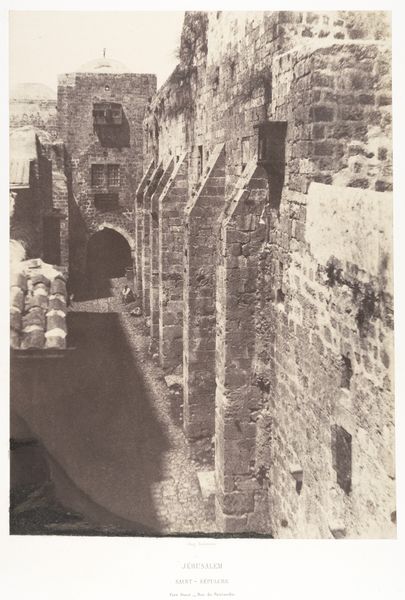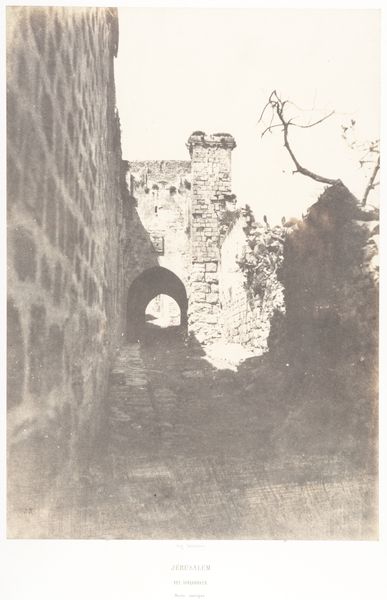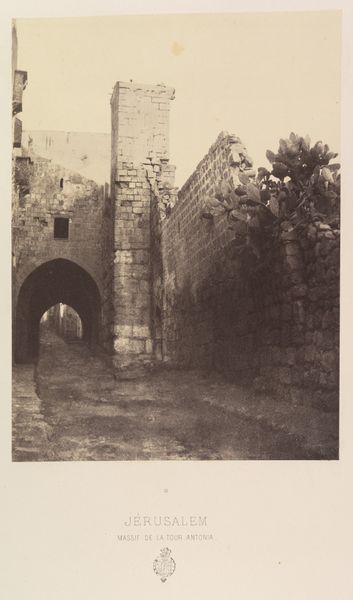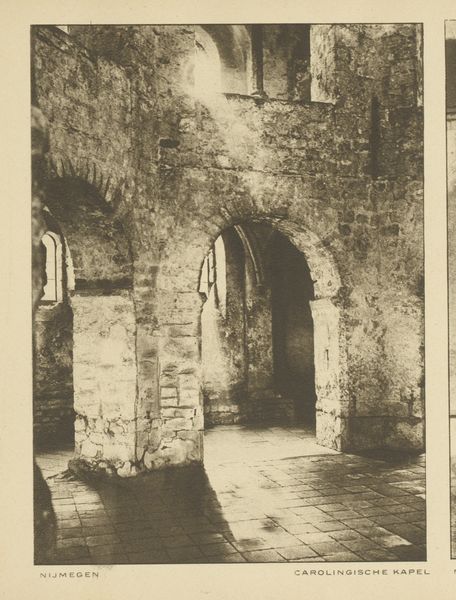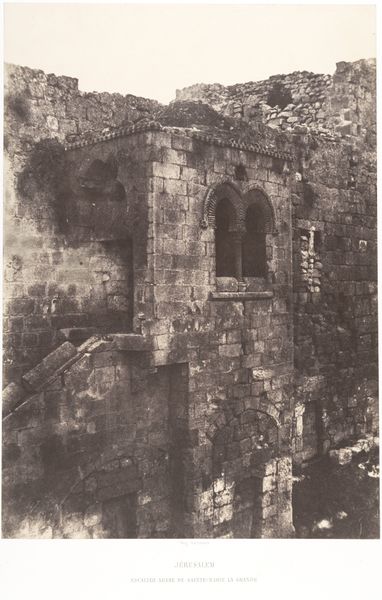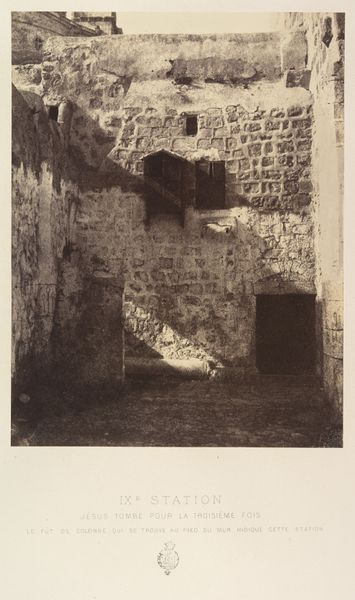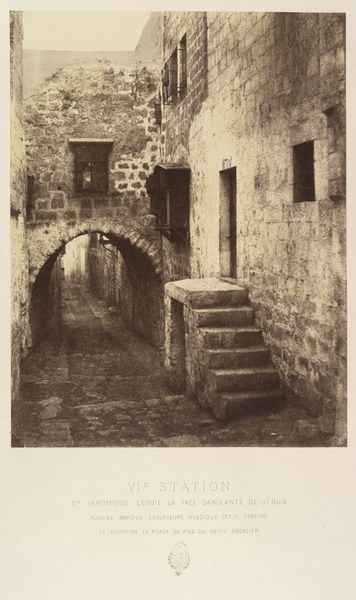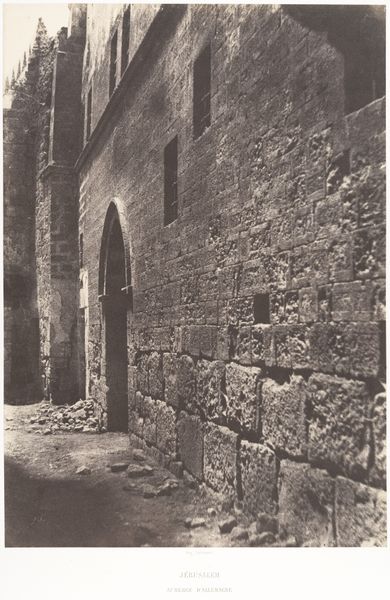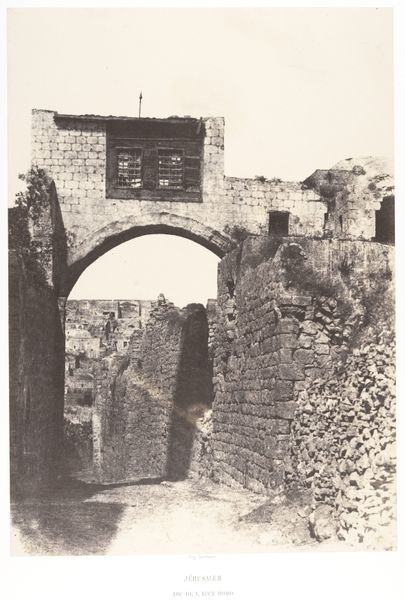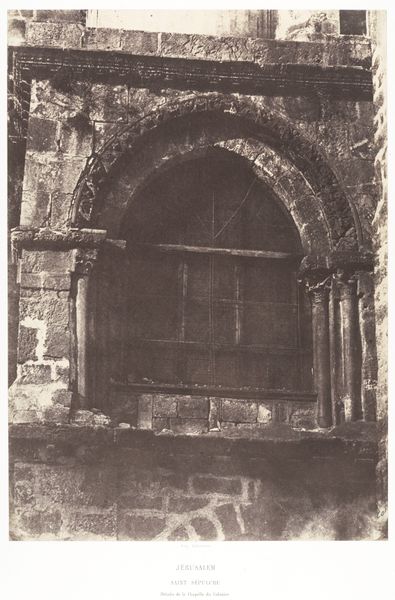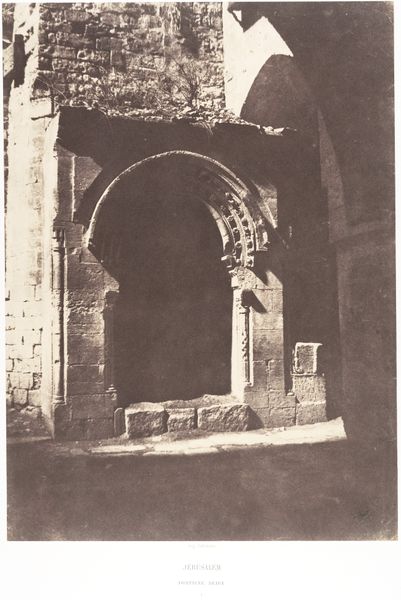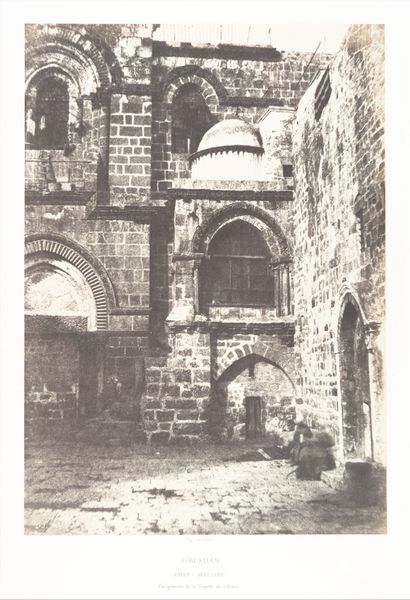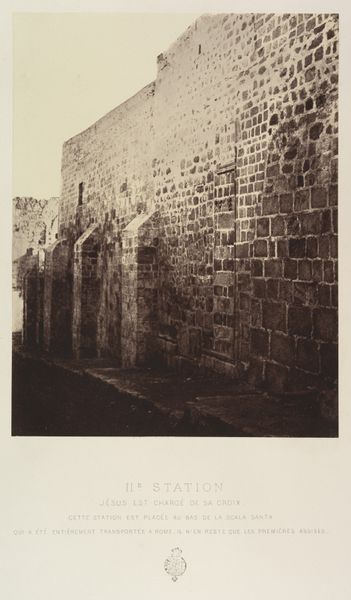
architecture
#
natural shape and form
#
rough brush stroke
#
organic shape
#
incomplete sketchy
#
charcoal drawing
#
charcoal art
#
carved into stone
#
arch
#
charcoal
#
watercolor
#
architecture
#
building
#
shadow overcast
Dimensions: Image: 33.5 x 23.6 cm (13 3/16 x 9 5/16 in.) Mount: 60.3 x 44.8 cm (23 3/4 x 17 5/8 in.)
Copyright: Public Domain
Curator: This image, titled "Jérusalem, Maison du mauvais riche," or "Jerusalem, House of the Bad Rich Man," was created between 1854 and 1859 by Auguste Salzmann. Editor: The first thing that strikes me is the somber, almost imposing weight of these ancient stones. The high contrast creates a sense of enclosure, of being pressed in by history itself. Curator: It certainly evokes a feeling of confinement. Looking through a contemporary lens, it's worth considering how access to wealth and power—represented by this house—created stark divisions and determined who could navigate spaces like Jerusalem freely, and who was marginalized. Editor: That’s a powerful reading. Visually, I’m drawn to the archway—a classical symbol of passage, yet here it seems to frame a shadowy void. Do you think it suggests something about the moral complexities of wealth hinted at in the title? Curator: Absolutely. Consider how the architectural features, like the arches and windows, appear almost fortress-like. It could be argued that they represent the ways in which the wealthy barricaded themselves, both physically and socially, from the less fortunate. The shadow play creates an even stronger sense of isolation and division. Editor: It’s interesting that Salzmann focuses on the architectural details, almost to the exclusion of human presence. It amplifies that sense of weight you mentioned; these stones carry stories, burdens even. Curator: Precisely. By foregrounding the architecture, Salzmann might be implicitly commenting on the enduring legacy of inequality, long outlasting individual lives. This piece, beyond its aesthetic value, encourages critical examination of social structures inherent even in sacred spaces. Editor: I’m struck by how relevant this 19th-century photograph feels today. The visual symbols – the imposing architecture, the contrasting light and shadow – offer potent insights into lasting power dynamics. It makes you think about the symbolic weight of physical spaces and how they continue to shape social realities. Curator: Indeed, this exploration leaves me with an awareness of the subtle, yet profound, ways our built environment mirrors—and perpetuates— societal inequalities.
Comments
No comments
Be the first to comment and join the conversation on the ultimate creative platform.
